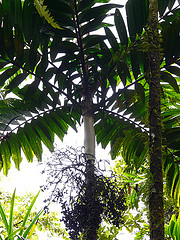
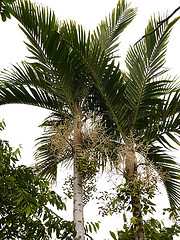
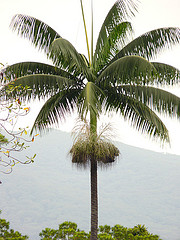
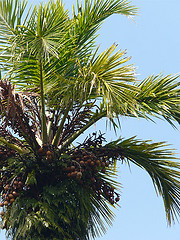
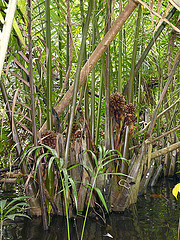
A presentation by Carl Lewis, Researcher, Fairchild Tropical Botanic Garden; Christie Jones, Curator of Palms and Cycads, Fairchild Tropical Botanic Garden; Faith Bishock, Director, The International Palm Society; and Steve Perlman, Research Biologist, National Tropical Botanic Garden. Dr. Lewis will talk about DNA research and what it tells us about Micronesian palms. Christie Jones will talk about the importance of palms. Steve Perlman from NTBG will talk about plant extinction.





Despite its small size, Pohnpei has a diverse native palm flora. It is home to five palm species, including two that are endemic (found nowhere else) and two that are found on only one other island. Presentation open to students, staff, faculty, members of the community, and the general publice. Come and learn about the wonderful Pohnpeian palms of Pohnpei.
Ponapea hosinoi (Pohnpei: kedei)
Ponapea ledermanniana (Pohnpei: kedei, Kosrae: kitacr)
Clinostigma ponapense (Pohnpei: kotop)
Metroxylon amicarum (Pohnnpei: oahs)
Nypa fruticans (Pohnpei: parem, Kosrae: fahsuc)
Ponapea hosinoi (Pohnpei: kedei): Distribution: Endemic to Pohnpei. Attractive palm with lightly fragrant flowers. It grows to 12 meters tall and bears inflorescences year-round below its crown of leaves. It differs from Ponapea ledermanniana in having wider leaflets, scaly-brown inflorescence branches, and egg shaped fruit. Both species of Ponapea have the same local name.
Ponapea ledermanniana (Pohnpei: kedei, Kosrae: kitacr) Distribution: Native to Pohnpei and Kosrae. Although it is common on Kosrae, it is rare on Pohnpei. Isolated individuals and small populations are scattered in low elevation forest. Its fruits are edible, so it is sometimes grown in home gardens. It grows to 12 m tall and rarely extends beyond the surrounding tree canopy. Unlike P. hosinoi, this species has bright white inflorescences, and its fruits are tapered at both ends. Its leaflets are narrower than those of P. hosinoi.
Clinostigma ponapense (Pohnpei: kotop): Distribution: Endemic to Pohnpei. This is the tallest, most graceful palm on Pohnpei. It grows throughout the island but is most abundant in high-elevation forest, where it overtops the tree canopy. Reaching over 30 m in height, it can be spotted on many of Pohnnpei's hills and ridges. Clinostigma is larger than Ponapea, and it also differs in having black fruit and leaflet tips that taper to a point. Like Ponapea its flowers and fruits are held below the crown.
Metroxylon amicarum (Pohnnpei: oahs): Distribution: Native to Pohnpei and Chuuk. This massive palm grows to 30 m tall, and its leaves may be over 6 m long. It is most common in wet, swampy areas, but it also grows on hills. It differs from the other tall palms of Pohnpei in the position of its inflorescences, which are borne within (not below) the crown of leaves. Its heavy, baseball-sized fruits are beautifully scaly, and the seeds (ivory nut) are used for carving.
Nypa fruticans (Pohnpei: parem, Kosrae: fahsuc) Distribution: Widespread in the Asia-Pacific region, naturalized elsewhere. This mangrove palm forms thick stands in the saltwater swamps of Pohnpei and Kosrae. It has a very unusual appearance for a palm, with tall, upright leaves and underground, branching stems. The flowering structures are unique, with conspicuous ball-shaped female inflorescences and catkin-like male inflorescences. Although it is used for thatch in many parts of its range, it does not appear to be harvested in Pohnpei.
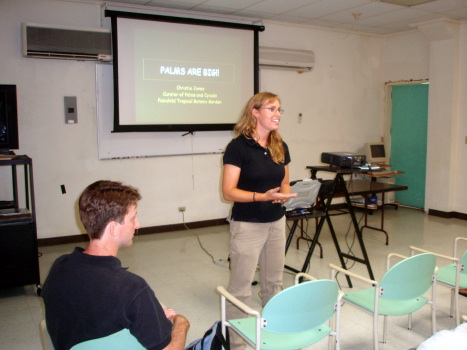
Christie Jones
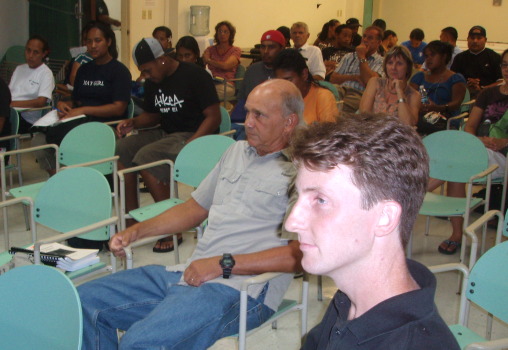
Steve Perlman, Carl Lewis
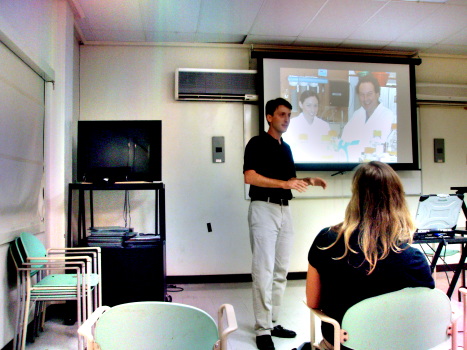
Carl Lewis
Information from exploreplants.org